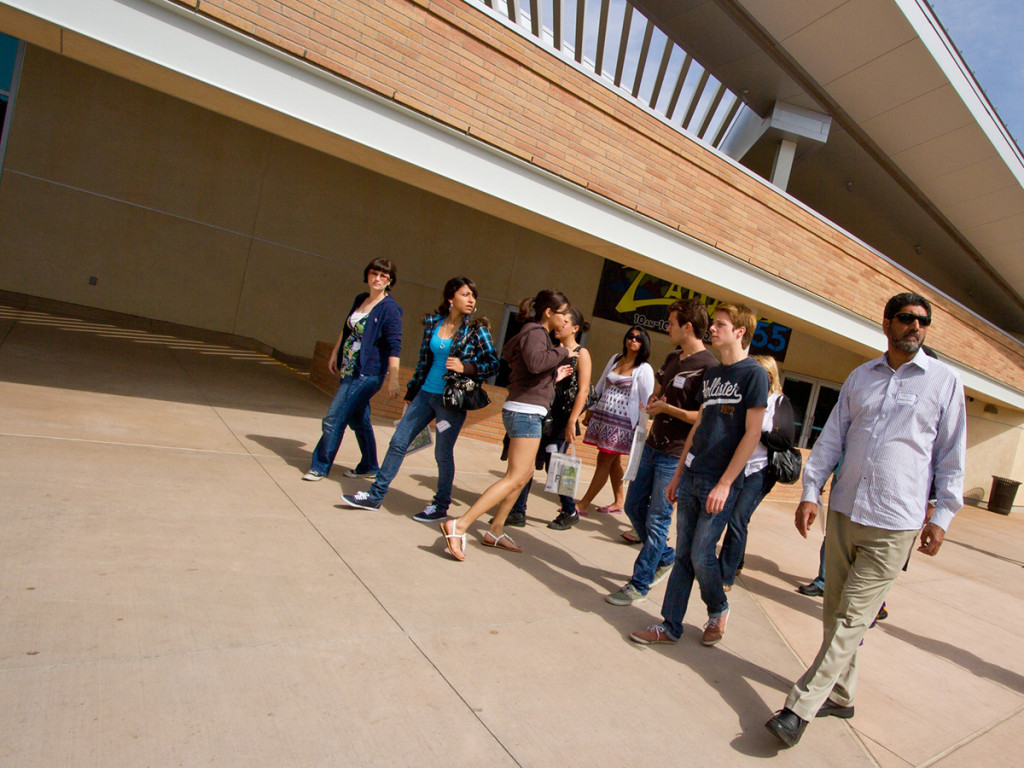
After the final due date of Nov. 30, the number of undergraduate applicants was counted and revealed promising results for UCR: For the first time in our school’s history, UCR received over 50,000 applications; to be specific, out of the 52,467 total applicants, 41,559 were freshmen applicants and 10,908 were transfer applicants. In contrast to 2014, UCR saw a 10 percent increase in the overall number of undergraduate applicants, which is one of the higher application increases, along with UC Merced’s 13.5 percent increase.
Though Director of Undergraduate Admissions Emily Engelschall said this application increase is a significant “milestone” that “shows that UC Riverside continues to grow as a campus of choice,” our numbers pale in comparison to the record highs of the UCs that exceeded over 100,000 applications, such as UC San Diego and UC Berkeley. Also, for the last five years, the UC system has always experienced large jumps in undergraduate applications at each university; for example, counting only freshmen applications, UCR had an additional average of 2,000 to 3,000 more applications per year, while UC Irvine had an average of additional 4,000 to 5,000 more applications per year. In reality, this “milestone” is not exclusive to just UCR, but should be considered as one for the whole UC system. These recent numbers do not truly represent UCR’s popularity, since others experience it as well. Instead, our university should highlight other aspects that do demonstrate it as top-notch, from its unique degree programs like creative writing and entomology or its diversity represented in student organizations. Yet, hopefully, these new numbers will garner more support for UCR in terms of funding for the university to further expand and innovate — without having to rely on numbers as a means of status.
However, concern shouldn’t be placed just on this popularity contest, but rather on Engelschall’s statement that the high quality of the applicant pool “will hopefully ensure that we keep our academic quality up while still accommodating additional students.” Such a statement dismisses the negative consequences that will arise if this accommodation is not handled carefully and strategically. For it is not the applicant pool that will ultimately damage UCR’s academic prestige, but its incapability to handle the larger student population it so desires.
For the fall 2016 term, the UC system plans to accept 6,500 more students than last year with UCR projected to accept around an additional 750 students. While this news is welcomed by high school seniors and transfer students competing against a record-high number of over 206,000 UC applicants, the UC system does not have the faculty and the resources to accommodate this increase. Currently, officials are scrambling to meet this higher enrollment with plans to increase housing, hire faculty and expand student services, such as UC Los Angeles’s short-term plan to room three students in dorms designed for two.
As Daniel Hare, UCR professor and chair of the academic senate, emphasized, “everything we need to maintain for quality requires a commitment for resources,” which “are not being made.” Although UCR has a head start with its UCR 2020 plan, many of its plans are long-term and not immediate, which is now needed if this projected increase is to continue. As students we see and experience it all the time as we try to find an empty seat before lecture, but are left sitting on the floor; as we are waitlisted once again for a required class; as we are unable to meet with faculty during office hours due to others also wanting to do so; as we try to find affordable housing in a dense area that only allows four students per household.
We need actions similar to how 80 new faculty members were hired last fall or the construction of new housing like Glen Mor 2 (although that pricing is plain frightening). Immediate solutions that can be pursued by UCR can range from creating more online classes that consist of large breadth classes in math and writing (as these are easily impacted classes) to allowing more students to share rooms in on-campus housing (bunk beds will be everyone’s best friend).
The effects of larger classroom sizes to the lack of affordable housing on students have been well documented and researched for years, which should be considered by UCR and the rest of the UC system as they continue enroll more and more students.
It’s understandable and commendable that the UC system wishes to meet the increasing desire and need to have a college education via expanding its enrollment population, but it must keep in mind its current students as well. Hopefully, UCR administration will soon announce its immediate plans on how the university shall accommodate this increase.
Or else, the quality of education for the current students enrolled will suffer.








